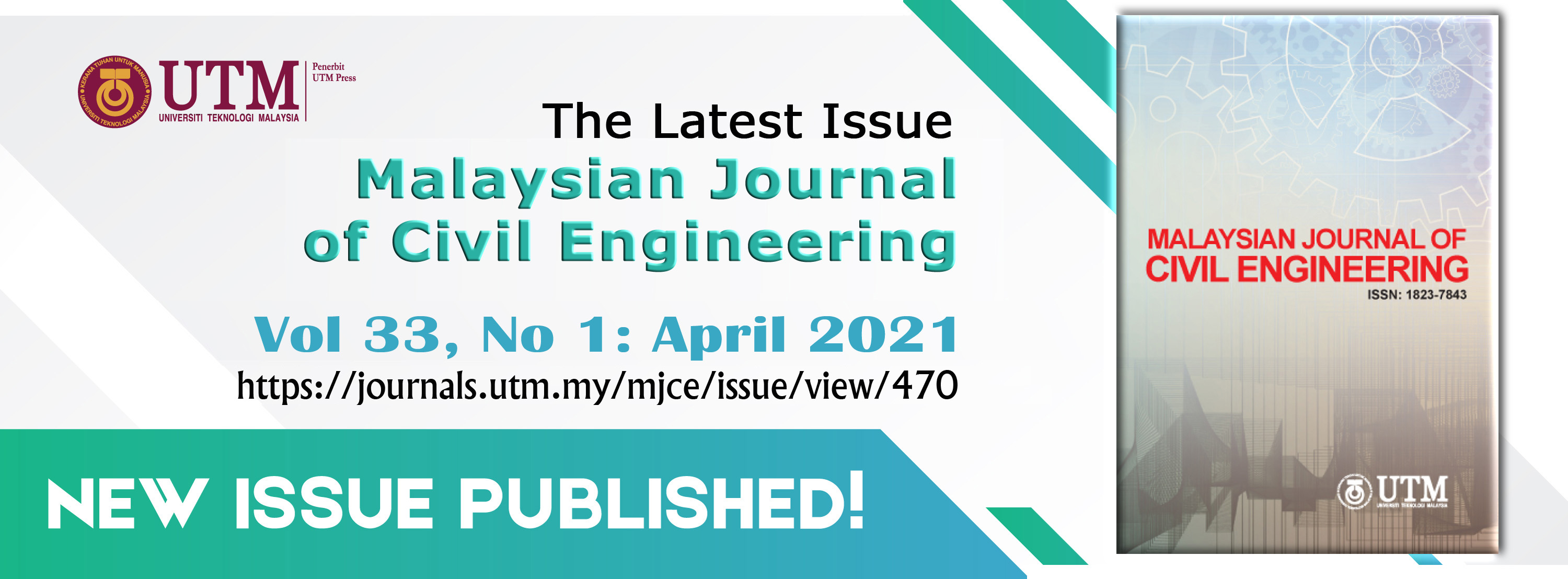INCIDENCES OF BITUMEN CONTAMINATION OF WATER SOURCES IN SOME COMMUNITIES OF ONDO STATE, NIGERIA
DOI:
https://doi.org/10.11113/mjce.v33.16402Keywords:
Bitumen-deposits, water-pollution, water quality, treatment-facilitiesAbstract
Bitumen was discovered in some communities: Agbabu, Ilubinrin, Lodasa and Boridele in Ondo State, Nigeria around 1900 but was found inadequate for commercial exploitation. This report is on the levels of presence of bitumen in the areas and its effects on the available water sources and to make recommendations. Samples of water taken from 3 selected streams and 2 wells per location were subjected to physico-chemical analyses in line with America Public Health Association (APHA). Questionnaire were administered to sixty (60) people from bitumen-affected areas which covered sources of water, water pre-treatment measures, availability of water treatment facilities and effects of bitumen deposits on water bodies. Results obtained shown that most water users sourced water from groundwater recorded 73.33% followed by 16.67% for surface water and 9% for rain water harvesting. There might be population using a combination of the two or more sources of water. About 90% of the respondents knew that direct use of such water was harmful for drinking, washing, bathing and cooking. Water quality impairment such as colour and high level of salt are common in the water. This practice could have health implication on them if continued unabated. Pollution index for toxic metals (Pb,As and Hg ) and Total Petroleum Hydrocarbons(TPH) values determined were relatively high suggesting pollutant are related to the bitumen deposits in the region. For example Ilubinrin well (0.5 mg/L), and Lodasa well (0.3 mg/L) while others were at non detection level. For TPH, there were variations in the tested water samples, Lodasa well recorded the highest value of 1480 mg/L, Agbabu stream 900, Ilubinrin stream and well 240 mg/L and 120 mg/L, respectively, Agbabu well 110 mg/L, and the least at Lodasa stream 80 mg/L. This could be attributed to seasonal rain that control streamflow of water bodies in the bitumen-rich area. The study indicated that bitumen, being a complex mixture of hydrocarbons and associated metals was responsible to the pollution level in the water bodies reported
















